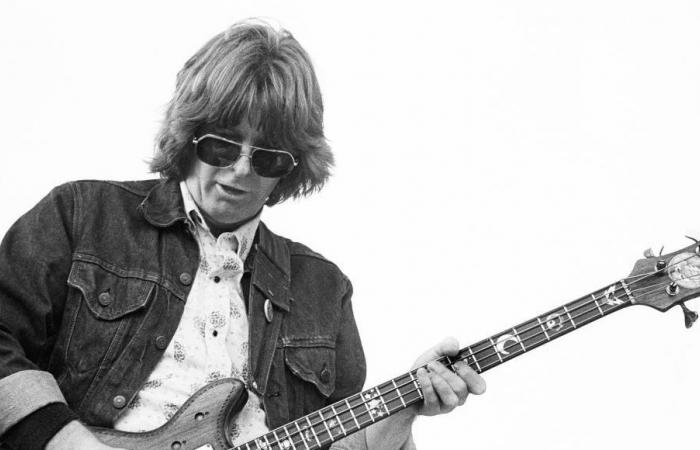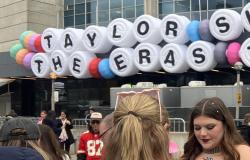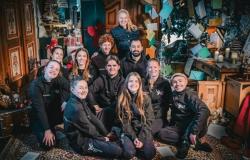
The voice of a musician who, usually, was not a singer but a bassist, and what a bassist, Phil Lesh who we have just heard in a song signed in 1970 by the defunct Californian group Grateful Dead, « Box of Rain ». A song which served as an introduction to what remains, without doubt, one of the best, if not the best album of the group, American Beauty. Phil Lesh was one of the pillars of this group. We have just learned of his death at the age of eighty-four. Phil Lesh had written, note for note, the melody of this song for which Robert Hunter, the group’s official lyricist, had written the text. It’s a song very much in the air of that time, 1970, between rock and country, still marked, discreetly, by the psychedelic movement from which the group Grateful Dead came. This particular style was beginning to take shape, it was notably that of the famous trio Crosby, Stills and Nash, soon a quartet with Neil Young. And contrary to certain preconceived ideas about the music that the West Coast hippies made, the lyrics of the songs, the feeling that they diffused, had nothing blissful or optimistic. Already, the name of the group, even if it apparently came from a tarot card, had a grating resonance: the dead or the grateful dead.
To view this Youtube content, you must accept cookies Advertisement.
These cookies allow our partners to offer you personalized advertising and content based on your browsing, your profile and your interests.
Manage my choices I authorize
Grateful Dead lyricist Robert Hunter had written a poem that was both simple and enigmatic, as the best are. What could this box of rain, water and wind be? Well the Earth on which we move. We don’t know who put this planet there. We circle around it ourselves like moths around a flame, says the song, we control nothing, we understand nothing, and it’s quickly over. Hope in all this? None. Utopia? Nowhere. As I told you, it was Phil Lesh who sang this melody, which was unusual, often the voice we heard, in Grateful Dead, was that of Jerry Garcia, the guitarist and lead singer, when it was not not that of the other guitarist, Bob Weir, the only survivor of the original lineup, today, with drummer Bill Kreutzmann. Phil Lesh’s career is worth mentioning, briefly, because it is not very usual. Already, within the Grateful Dead, he practically had a soloist position, which is rare for a bassist. He had a very melodious playing, in counterpoint, like Paul McCartney or Brian Wilson with the Beach Boys. Even if it was rather the example, close to him, in San Francisco, of Jack Casady of Jefferson Airplane or the Scotsman Jack Bruce, of the British trio Cream, who inspired him. He frequently played, I read that, a six-string instrument and among the group’s admirers, who followed it faithfully, those called the Dead Heads, devotees of Phil Lesh, who began systematically facing him, on the side where he was playing. Apparently it was called the Phil Zone.
Phil Lesh had no intention of playing in a rock band. An only son, raised in the love of music by an amateur pianist father, he should, logically, have become a trumpeter in a classical orchestra. This is the training he followed in a conservatory, within a high school. A training that he completed by following at a university, Mills College, in Oakland, the city which faces San Francisco, on the other side of the Bay, a course in composition and musical theory taught by Luciano Berio, a Italian composer who was one of the pioneers of the use of electronics in the music specific to the avant-garde of the period. Berio’s student, in the United States, was one of the pioneers of the so-called minimalist movement, the composer Steve Reich. Dismissed from the orchestras in which he had briefly participated, Phil Lesh had a sort of revelation when he discovered Jerry Garcia playing the banjo and singing in a bar. He then earned his living working in a post office, sometimes also as a sound engineer: “This is the first timewould write Phil Lesh in his autobiography, cited by the New York Times in his eulogy, that I had the intuition that simple and direct music could have the same aesthetic and emotional impact as an opera and a symphony”. An experience that other connoisseurs of great music have or continue to have, despite the dogmatism or simple mental rigidity of some.
To view this Youtube content, you must accept cookies Advertisement.
These cookies allow our partners to offer you personalized advertising and content based on your browsing, your profile and your interests.
Manage my choices I authorize
In any case, this experience pushed Phil Lesh to abandon a clear path and, at the suggestion of Jerry Garcia, to learn, in two weeks, he would say, to play the bass, well, he had good basics. He approached this instrument based on his knowledge of harmony, from Johann Sebastian Bach to Charles Mingus. Which was the source of a truly unique game, to which I wanted to pay homage. First voice today to appear in this program, that of Kaia Kater. A musician that I introduced to you for the first time eight years ago, in 2016. She was then in her early twenties. A citizen of Quebec, English, of mixed West Indian and African origin, Kaia studied the folklore of the Appalachians, a mountain range, which descends from the far eastern tip of Canada to Alabama, in the southeast of the United States, crossed by travelers, peddlers, preachers, the source of many songs at the source of the blues, folk and country repertoires. Kaia Kater is a banjo virtuoso. His music has evolved since his beginnings, opening up to different rhythms, evoking certain Middle Eastern music, sometimes. We also find pulsations and harmonies from jazz, as in this title with which his new album begins, Strange Medicine. The song is called « The Witch », the Witch.
To find out more, listen to the show…
Playlist :
Grateful Dead – « Box of Rain » album « American Beauty » (2013 Remaster)
Kaia Cater – « The Witch » (feat. Aoife O’Donovan) album « Strange Medicine »
Yasmin Williams – « Malamu » (feat. Marcus Gilmore & Immanuel Wilkins) album « Acadia »
The Weather Station – « Neon Signs »
Laura Marling – « Patterns in Repeat » album « Patterns in Repeat »
Astrid Sun – « Say You Love Me » album « Great Doubt »
Cassandra Jenkins – “Telephone Waiting” album “My Light, My Destroyer”
Cassandra Jenkins – « Devotion » album « My Light, My Destroyer »
Grateful Dead – « Unbroken Chain » album « From the Mars Hotel »
Very Good Trip Listen later
Lecture listen 53 min





